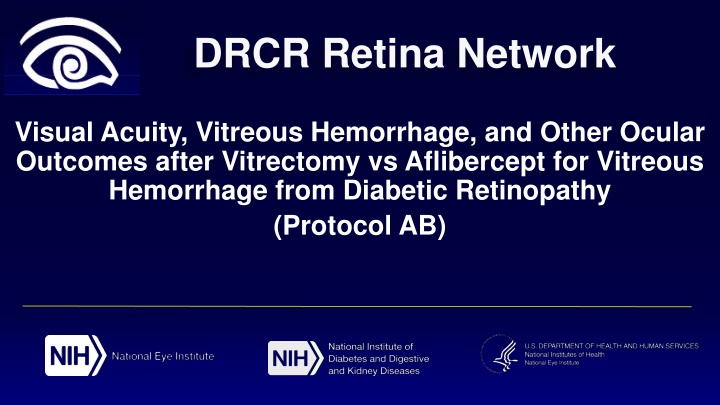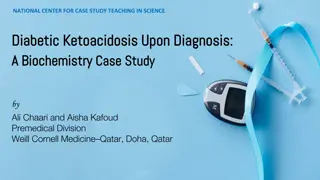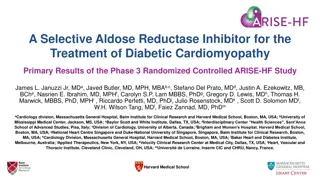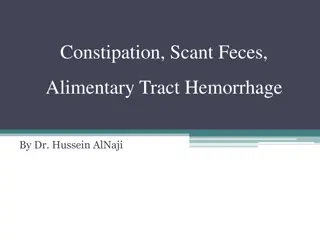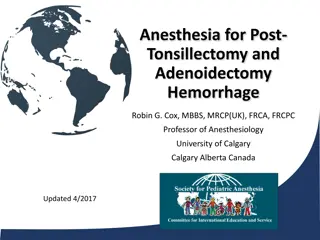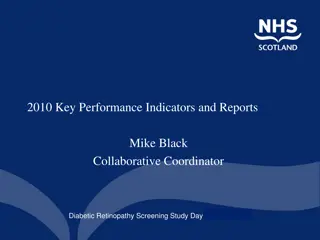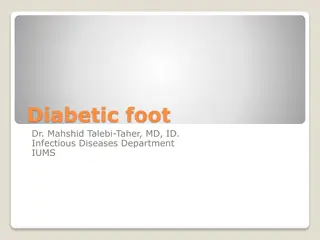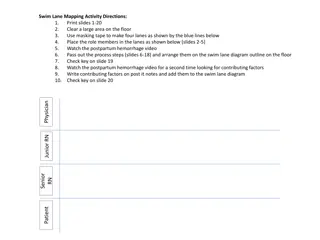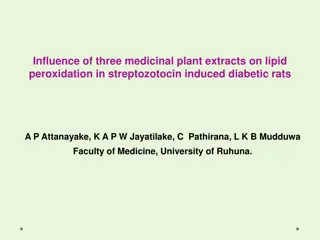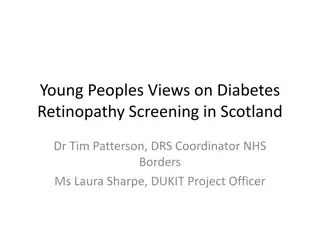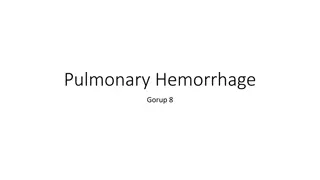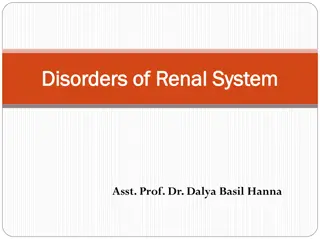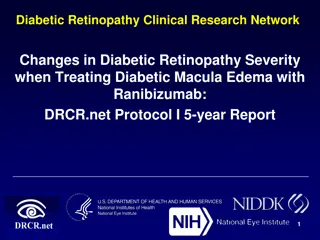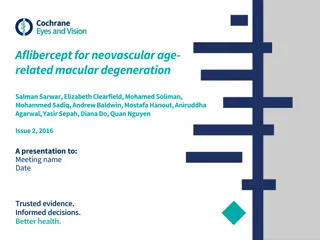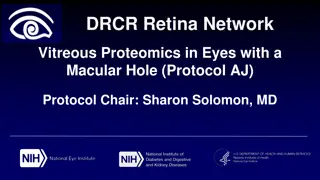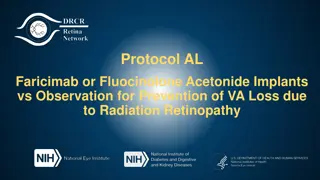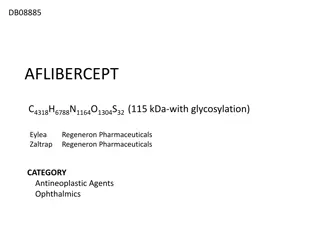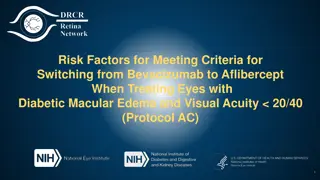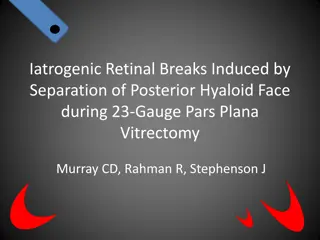Vitrectomy vs Aflibercept for Vitreous Hemorrhage from Diabetic Retinopathy
Vitreous hemorrhage from proliferative diabetic retinopathy can lead to severe vision loss. This study by DRCR Retina Network compares outcomes of vitrectomy vs aflibercept treatment. The randomized clinical trial evaluated visual acuity, vitreous hemorrhage outcomes, and other ocular parameters over 24 weeks. No significant difference was found in visual acuity between the two treatment groups. Explore the study objectives, treatment regimens, and additional outcomes influencing treatment decisions for patients with vitreous hemorrhage from proliferative diabetic retinopathy.
Download Presentation

Please find below an Image/Link to download the presentation.
The content on the website is provided AS IS for your information and personal use only. It may not be sold, licensed, or shared on other websites without obtaining consent from the author.If you encounter any issues during the download, it is possible that the publisher has removed the file from their server.
You are allowed to download the files provided on this website for personal or commercial use, subject to the condition that they are used lawfully. All files are the property of their respective owners.
The content on the website is provided AS IS for your information and personal use only. It may not be sold, licensed, or shared on other websites without obtaining consent from the author.
E N D
Presentation Transcript
DRCR Retina Network Visual Acuity, Vitreous Hemorrhage, and Other Ocular Outcomes after Vitrectomy vs Aflibercept for Vitreous Hemorrhage from Diabetic Retinopathy (Protocol AB)
Vitreous Hemorrhage from Proliferative Diabetic Retinopathy Vitreous hemorrhage (VH) from proliferative diabetic retinopathy (PDR) can cause severe vision loss Over 5 years in Protocol S, 46% 48% of eyes had VH despite treatment with anti-VEGF or panretinal photocoagulation (PRP) 2 https://nei.nih.gov/health/diabetic/retinopathy
DRCR Retina Network Protocol AB Randomized clinical trial comparing initial aflibercept vs vitrectomy with PRP for VH from PDR There was no difference between groups in the primary outcome of difference in mean visual acuity over 24 weeks (area under the curve) VA was similar at 24 and 104 weeks in both groups 1/3 of eyes in each group received the alternate treatment for PDR or DME during follow-up, per protocol
Mean Visual Acuity Letter score Snellen 20/12 100 20/25 80 20/63 60 Primary outcome: Area under the curve over 24 weeks adjusted difference : -5.0 letters (95% CI, -10.2 to 0.3) P = .06 40 20/160 20/400 20 Vitrectomy + PRP N = 105 N = 100 0 4 N = 87 N = 90 Aflibercept <20/800 0 104 12 24 36 52 68 84 Weeks 4 Error bars represent 95% confidence Intervals
Study Objectives 1.Provide details on DRCR Retina Network treatment regimens for VH from PDR when starting with aflibercept or vitrectomy + PRP 2.Evaluate additional outcomes that might influence treatment decisions for individual patients 5
Study Design Randomized Multicenter Clinical Trial (N = 39 Sites) Outcomes 205 adults with type 1 or 2 diabetes One study eye with vitreous hemorrhage from PDR 1. Causing vision impairment (20/32 or worse) 2. Requiring intervention Primary Average VA Over 24 Weeks (Area Under the Curve) 2 mg Aflibercept (Vitrectomy prn*) Secondary Treatment With Vitrectomy or Aflibercept During Follow-up Vitrectomy and PRP (Aflibercept prn*) *Based on pre-specified study guidelines 6
Study Visits Surgery within 2 weeks of randomization Recurrent VH treated with 2 monthly aflibercept injections and additionally q 4 weeks as needed Vitrectomy and PRP (Aflibercept prn) All participants had visits at 4, 12, 24, 36, 52, 68, 84, and 104 weeks Injections at baseline, 4, 8, and 12 weeks Starting at 16 weeks, injections could be deferred if successful, Vx performed if persistent VH 2 mg Aflibercept (Vitrectomy prn) NOTE: In both groups, eyes with visual acuity loss from DME were treated with aflibercept based on DRCR Protocol T algorithm 7
Visit Completion (Excluding Deaths) 24 Weeks* Baseline 2-Years** Initial Aflibercept N = 97 (97%) N = 90 (96%) N = 100 Initial Vitrectomy and PRP N = 98 (93%) N = 87 (85%) N = 105 * Overall 24-week completion = 95% ** Overall 2-year completion = 90% 8
Baseline Participant Characteristics Initial Vitrectomy and PRP N = 105 Initial Aflibercept N = 100 Characteristic 56 47% 17% 8.7 43% 36% 16% 5% Age (y), Mean Female Type 1 Diabetes HbA1c (%), Mean Hispanic or Latino White Black/African American Other 57 41% 18% 8.3 39% 45% 10% 6% Race/Ethnicity 9
Baseline Ocular Characteristics Initial Vitrectomy and PRP N = 105 Initial Aflibercept N = 100 Characteristic Visual Acuity Letter Score, Mean 36 34 Approximate Snellen Equivalent 20/200 20/250 Phakic 75% 77% Prior anti-VEGF for DME 23% 27% Prior anti-VEGF for DR 23% 21% Prior PRP 42% 55% 10
Visual Acuity Over 24 Weeks by Treatment and Baseline Visual Acuity Aflibercept Mean Letter Score Baseline Visual Acuity Vitrectomy Mean Letter Score Adjusted Difference (95% CI) 20/32 to 20/160 72.2 76.6 -4.3 (-10.6 to 1.9) 20/200 to 20/800 60.1 64.6 -3.5 (-12.0 to 5.0) Worse than 20/800 48.4 65.1 -16.7 (-24.4 to 9.1) Treatment by Baseline Visual Acuity Interaction P value = .02 15
Receipt of Alternative Treatment Over 2 Years Aflibercept: Receipt of Vitrectomy Vitrectomy: Receipt of Aflibercept Baseline Visual Acuity 20/32 to 20/160 23% 29% 20/200 to 20/800 23% 29% Worse than 20/800 62% 39% 16
Traction Retinal Detachment: Vitrectomy Group In the vitrectomy group, investigators could give aflibercept prior to initial vitrectomy 44 of 105 eyes (42%) in the vitrectomy group received aflibercept before initial vitrectomy (median = 6 days prior) Investigators noted whether traction retinal detachment was present during initial vitrectomy 18
Presence of Traction Retinal Detachment During Initial Vitrectomy Vitrectomy Group: Number of Eyes Vitrectomy Group: Percentage of Eyes Pre-op aflibercept 5 of 26 19% 6 days prior 3 of 18 17% 7 days prior Not given 7 of 59 12% 19
Presence of Vitreous Hemorrhage 100 90 80 Percent of Eyes 70 60 50 40 30 20 10 0 4 12 24 52 104 Aflibercept Vitrectomy + PRP 22
Presence of Retinal Neovascularization 100 90 80 Percent of Eyes 70 60 50 40 30 20 10 0 4 12 24 52 104 Aflibercept Vitrectomy + PRP 26
Limitations Other than the primary outcome, these analyses were conducted post hoc and should be considered exploratory Analyses were conducted post hoc and should be considered exploratory Sample size in visual acuity subgroups was limited Presence of vitreous hemorrhage and retinal neovascularization were based on clinical examination, not reading center grading 29
Summary Both intravitreous aflibercept and vitrectomy with PRP are viable first-line options for the treatment of VH from PDR. Eyes that had initial vitrectomy with PRP had faster recovery of vision when baseline vision was worse than 20/800 and faster clearing of initial VH. Approximately one-third of the eyes in each group received the alternative treatment (aflibercept or vitrectomy with PRP). 30
DRCR Retina Network Thank You 31
